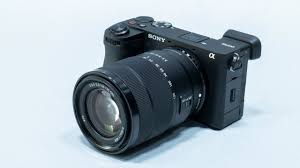The Sony α6700 is the latest addition to Sony’s APS-C lineup, promising significant upgrades over its predecessor, the α6600. After using it extensively for a month—both for photography and videography—I’ve formed some strong opinions about its performance, usability, and whether it’s worth the investment.
Build & Ergonomics
The α6700 retains Sony’s classic compact mirrorless design but with a few refinements. The grip is deeper, making it more comfortable to hold for extended periods, especially with larger lenses. The body is weather-sealed, which gives confidence when shooting in light rain or dusty conditions.
One notable addition is the front dial, which improves manual control. However, the rear dial remains somewhat stiff, requiring a deliberate press. The flip-out touchscreen is a major upgrade over the α6600’s tilting screen, making vlogging and high/low-angle shots much easier.
Image Quality
The 26MP APS-C sensor delivers excellent detail, with colors that are vibrant yet natural. The BIONZ XR processor significantly improves noise handling—I was pleasantly surprised by how clean images remained at ISO 3200 and even 6400. Dynamic range is impressive, allowing for good shadow and highlight recovery in post.
Autofocus is where the α6700 truly shines. The AI-powered subject recognition (human, animal, bird, insect, car, train) is incredibly accurate. Eye-AF locks on instantly, even in challenging lighting. For street photography and portraits, this reliability is a game-changer.
Video Performance
As a hybrid shooter, I was eager to test the α6700’s video capabilities. It shoots 4K 60p with minimal crop (1.04x) and 4K 30p with full sensor readout, resulting in sharp, detailed footage. The 10-bit 4:2:2 recording (via HDMI) and internal 10-bit 4:2:0 provide excellent grading flexibility.
The inclusion of S-Cinetone is a nice touch, offering a cinematic look straight out of the camera. However, rolling shutter is still noticeable in 4K 60p, so fast pans can introduce some distortion. Active stabilization works well for handheld shots, though it crops the frame slightly.
Battery Life & Usability
The NP-FZ100 battery is a carryover from the α6600, and it performs admirably. I consistently got around 500-600 shots per charge, even with heavy use of the EVF and touchscreen. For video, recording in 4K drains the battery faster, so carrying a spare is advisable.
The menu system, while improved, still feels cluttered. The new touch functionality helps, but Sony’s interface remains less intuitive than competitors like Fujifilm. Customizable buttons help mitigate this, allowing quick access to frequently used settings.
Limitations & Quirks
- Single Card Slot: For a camera at this price, the lack of dual slots is disappointing, especially for professionals who rely on redundancy.
- Overheating: While not as severe as some older Sony models, prolonged 4K recording (especially in warm conditions) can trigger overheating warnings.
- No Full-Frame Benefits: While the APS-C sensor is excellent, those coming from full-frame may miss the shallower depth of field and low-light advantage.
Final Verdict
After a month of use, the Sony α6700 has proven to be a versatile and powerful camera. Its autofocus, image quality, and video capabilities make it an excellent choice for hybrid shooters. While it has some quirks—like the menu system and single card slot—the overall performance outweighs these drawbacks.
If you’re upgrading from an older APS-C Sony model or looking for a compact yet capable camera for both photos and video, the α6700 is a compelling option. However, if you prioritize ruggedness and dual card slots, you might want to consider alternatives like the Fujifilm X-T5.
For me, the α6700 has become my go-to for travel and everyday shooting—it’s small enough to carry everywhere but powerful enough to handle professional work.
